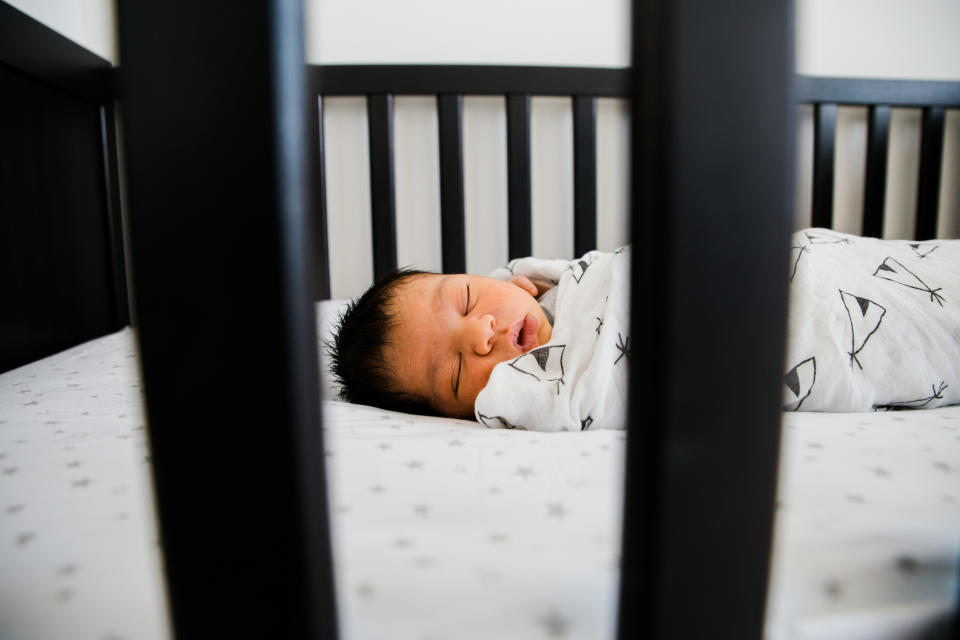What to Know About the Newly-Discovered Risk Factor for SIDS

Along with the exhaustion and sometimes the postpartum mental health difficulties that come with being a parent to a newborn, there are other concerns, including keeping your infant safe, especially while they sleep. Given that the number one cause of infant mortality is Sudden Infant Death Syndrome (SIDS), affecting about 3,400 babies in the U.S. each year, according to the CDC, it’s important to pay attention to some of the known risk factors – like unsafe sleep setups. But other than that, not much has been discovered about the physiological risk factors behind the mysterious and devastating condition, until now.
Thanks to important new research published in the Journal of Neuropathy & Experimental Neurology, we now know that there may be abnormalities in a brain receptor that could prevent infants from waking up and gasping for air if suffocation is occurring during sleep. That brain receptor is key in regulating the hormone serotonin, which we are familiar with in terms of keeping mood stable, but it also helps keep breathing, heart rate, and blood pressure stable, TODAY reported.
More from SheKnows
SIDS is rare, and most babies do have a natural response that can prevent them from losing too much oxygen while sleeping. Now that there might be an inkling that a change in brain receptor could be the culprit of a higher SIDS risk, researchers are hoping that they can eventually develop a test to screen for genetic or other abnormalities in serotonin brain receptors. They are also paying attention to science behind respiratory illnesses that affect infants such as RSV (for which there is a newly developed vaccine) and how those can affect breathing during sleep.
In the meantime, eliminating alcohol and cigarettes during pregnancy and beyond, and breastfeeding your baby could lower their risk of SIDS, according to TODAY. Other than that, all you can do is take necessary sleep precautions for your baby – keep scrolling for some safe sleep reminders.

How to Keep Your Baby Safe While Sleeping
Click here to read the full article.
The number one rule since the early ‘90’s has been “Back to Sleep.” It’s okay to soothe your baby and hold them on their side or stomach when rocking them to sleep for extra comfort, SheKnows reported, but they should sleep on their back only in order to support their breathing and reduce the risk of SIDS.
Additionally, it’s important to minimize soft bedding and any crib décor or stuffed animals in the crib while baby is asleep in there. Your baby should sleep on a firm surface like a crib or bassinet with a fitted sheet for the first year of life, and should not have a sheet or blanket over their body. Experts recommend swaddling your baby tightly for comfort or putting them in a fleece sleeper to keep them warm during sleep.
Other evidence strongly suggests against co-sleeping, or having a baby fall asleep with a parent on an adult bed or couch, so that the baby doesn’t end up underneath the bedding and unable to breathe. It’s best to keep baby in the same room as you for the first six months so you can check on them frequently, but separate from you while they sleep (hopefully) peacefully.
Best of SheKnows
7 Times Reddit Played Referee for Couples & Really Nailed the Relationship Advice
16 Baking Soda-Free Natural Deodorants That Won’t Irritate Your Sensitive Pits
These Celebrity Women Have Been Outspoken About Enjoying Porn
Sign up for SheKnows' Newsletter.
For the latest news, follow us on Facebook, Twitter, and Instagram.

